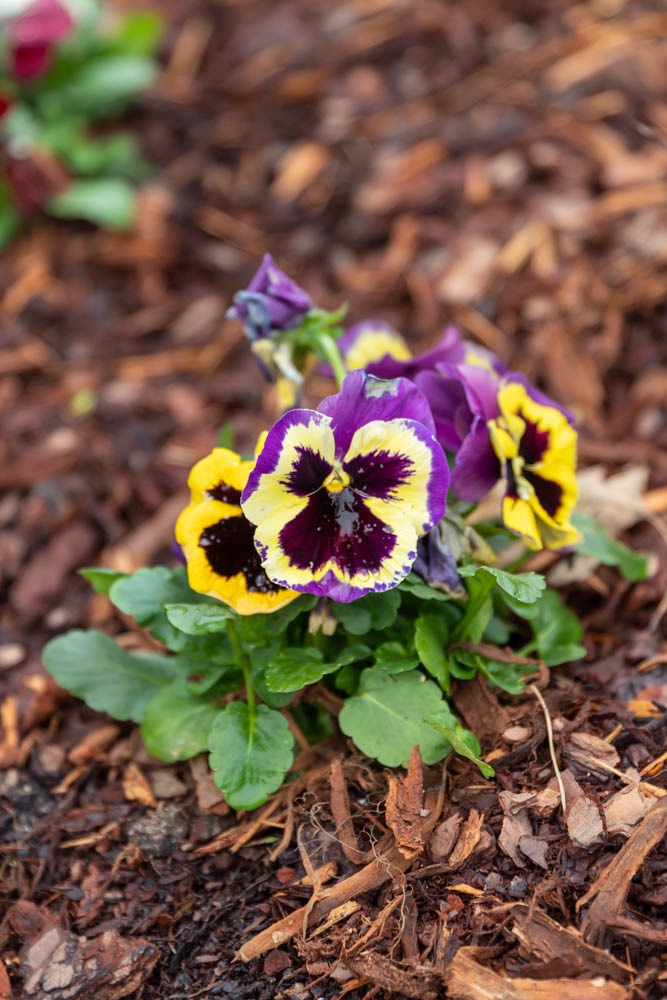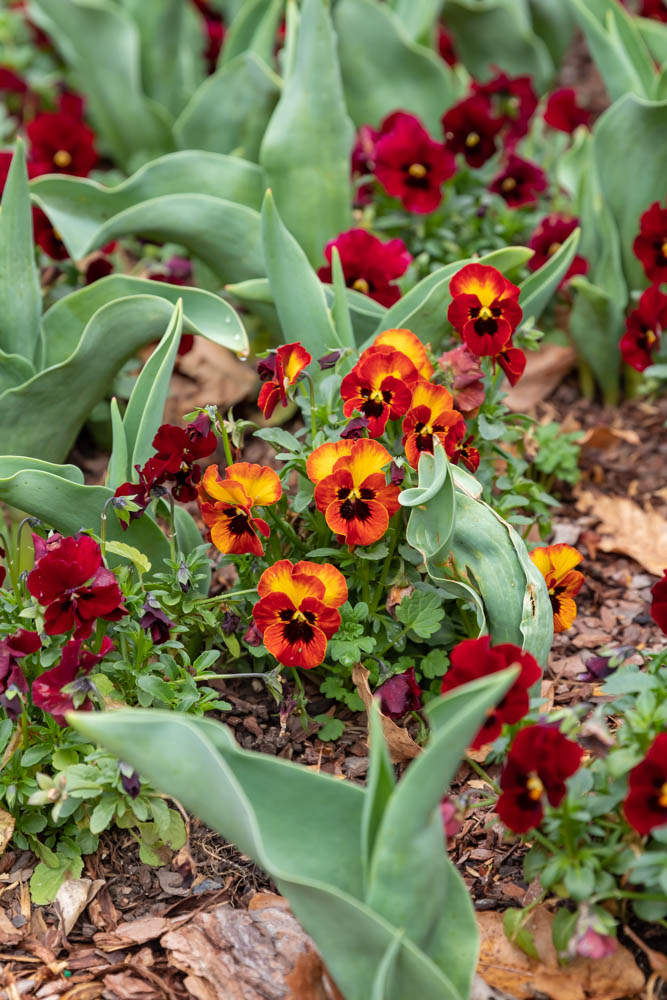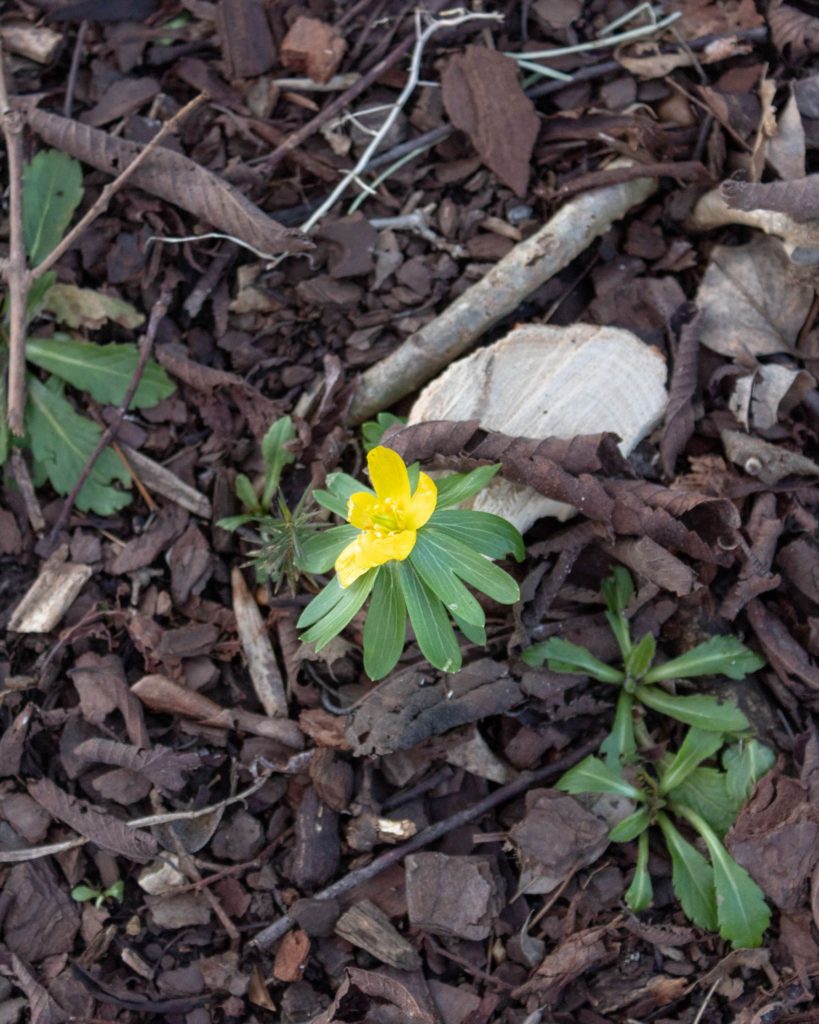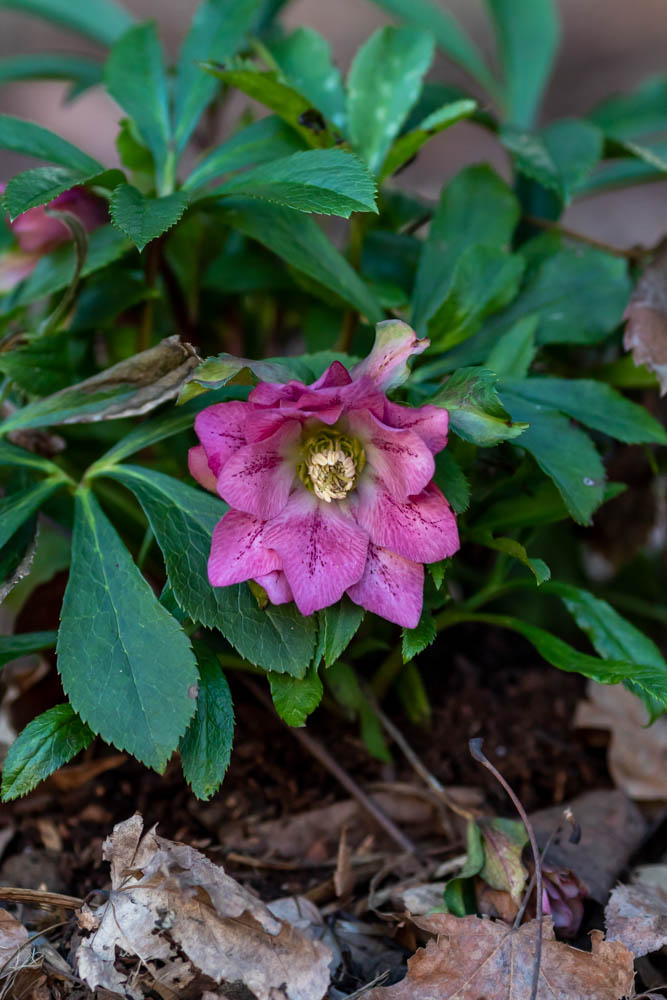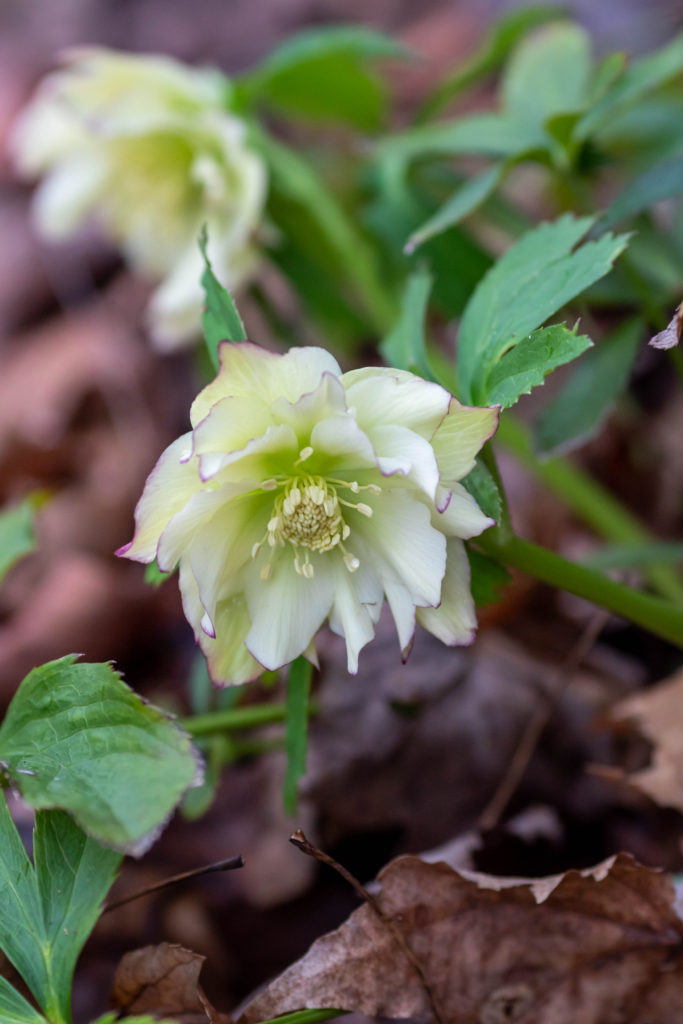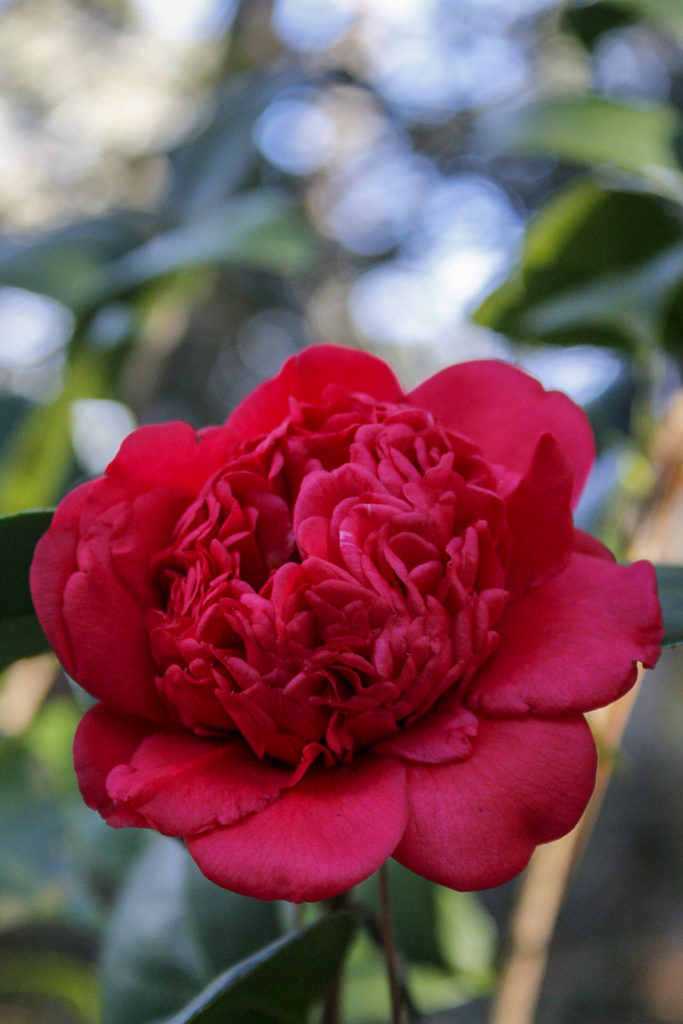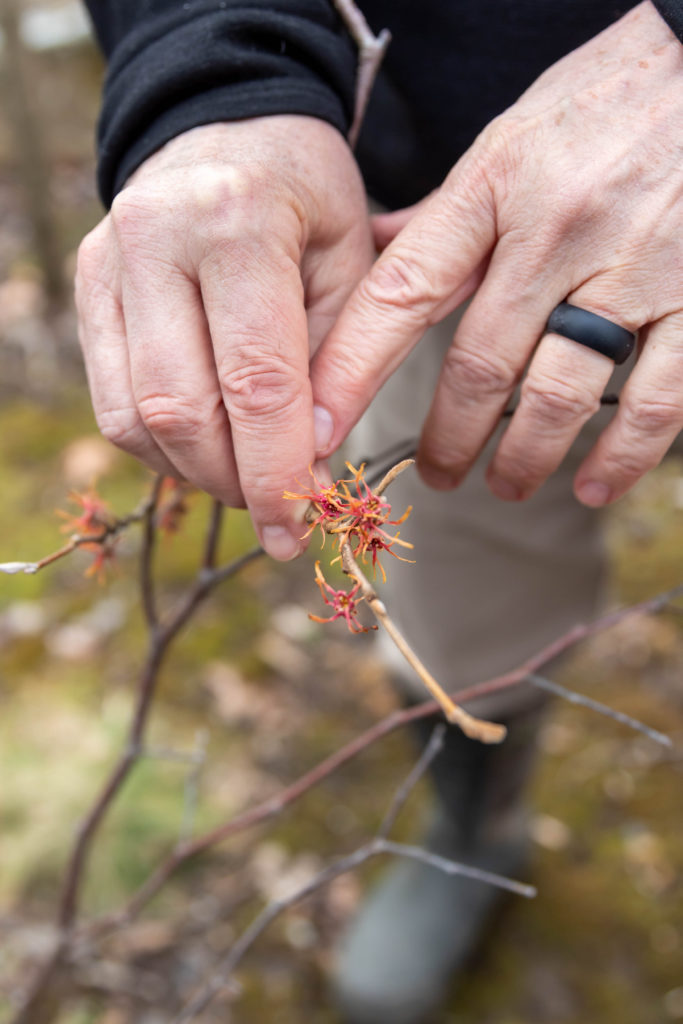If you want to have flowers in January, it’s not impossible! When I first started my garden, I wanted to always have something in bloom. If you want to do the same, you have to be intentional about plantings for the cooler months like December, January, and February. There are a few key plants to include in your garden: cool weather annuals, early-flowering bulbs, hellebores, Camellias, and early-flowering trees. I’ll show some examples of each January bloom to get you inspired!
Table of Contents
Cool Season Annuals
The most well-known flowers for the winter month of January are the cool season annual flowers violas and pansies. I like the dainty look of violas, and they are a bit more uniform in color than pansies. They can provide a pop of color in the landscape during the cooler months, and look good planted en masse.
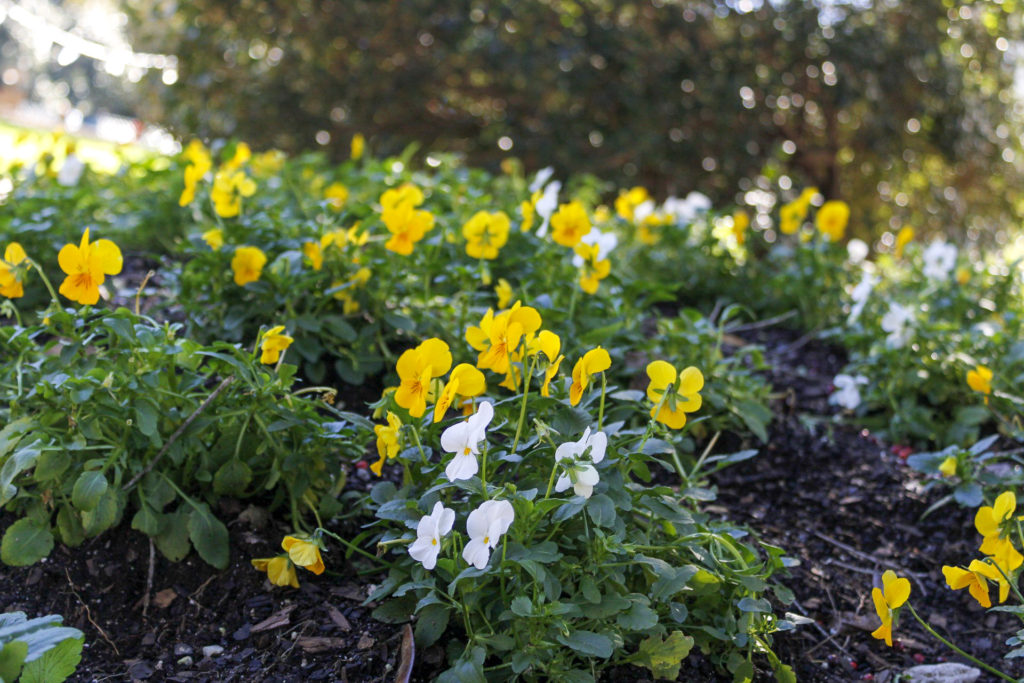
Pansies don’t have to be boring. There are a variety of colors and patterns to choose from. I can’t help but think of the pansies in Alice in Wonderland. I see their bizarre faces every time I see a pansy. They can also look great when interplanted among spring bulbs.

Pansies don’t have to be boring! 
There are many pretty varieties out there!
Early-flowering Spring Bulbs
There are a couple fall-planted bulbs that flower earlier than others in the spring, and some even flower in January. This will all depend on the weather and what zone you live in. I live in zone 7, and have seen all of these flower in January, albeit most of them at the end of the month. I have seen other gardeners post pictures as well that live further north than me, so it is still possible!
The most easily found is the crocus. I have seen these flower in late January and early February. The next easiest to find is the snowdrop (Galanthus nivalis, Galanthus elwesii, and Galanthus plicatus). They are more common in Europe, but when I set out to have flowers year-round, this was a must to include. I have seen these flower in gardens north of Nashville even earlier than they flower here. The last one is even less common, but you can find it at online nurseries that specialize in bulbs. It is called a winter aconite (Eranthis hyemalis) and flowers in late January/early February as well. This one is a little trickier to grow than the crocus or the snowdrop, or at least it was for me. I planted quite a few, but only a couple came up the first year, and then only one or two the year after. Tennessee might not be the best place for them seeing as the consistent moisture year round, and do best in well-drained soils, something a lot of Tennessee is not known for.

Purple crocuses 
Galanthus elwesii 
Eranthus hyemalis
Now let’s get into a couple other perennials.
Candytuft (Iberis sempervirens)
These are not super common at garden centers. I have seen them at Lowe’s before, so you might be able to find them there. The plants in my garden I started from seed from Swallowtail Garden Seeds. I was not successful the first year I tried them, but the second year, I was much more successful. They are also a great groundcover or rock garden plant.
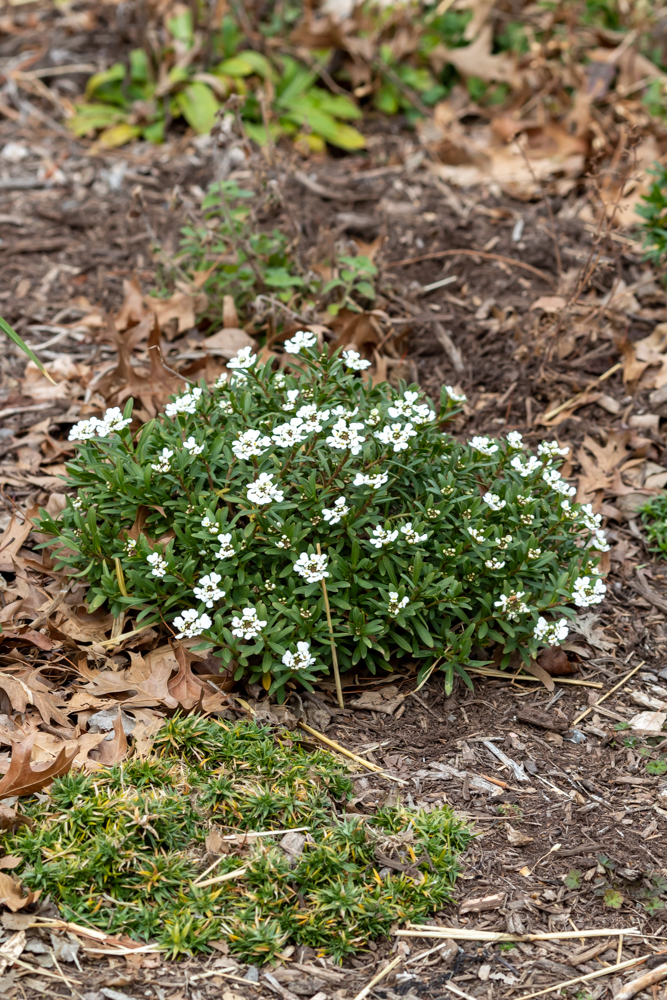
Hellebores
If you don’t have any hellebores in your garden right now, then what are you waiting for? Seriously, though. There are so many amazing cultivars out these days. I have seen these for sale at Lowe’s as well as my local garden center. Helleborus niger blooms earlier than Helleborus orientalis, and typically comes in white. The common name for Helleborus niger is Christmas Rose, so it typically blooms around Christmas. The common name for Helleborus orientalis is Lenten Rose, so it tends to bloom around Lent or Easter. However, a lot of the hellebores on the market now are hybrids, so they may bloom in January or they might bloom in March/April.

Helleborus x ericsmithii tends to bloom in January, February, and March. Helleborus x ericsmithii ‘Shooting Star’ is particularly floriferous. It is PACKED with flowers every spring and it has expanded since first planting it. They do not take well to transplanting, so make sure you find a good place for it and let it do its thing.
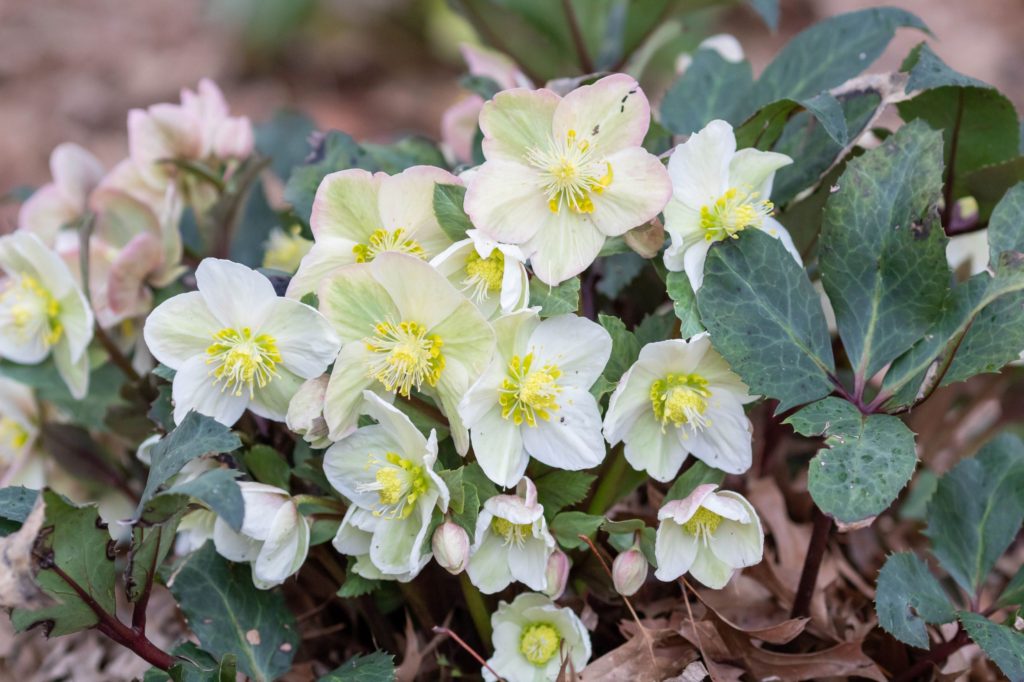
There are a lot more color options available with the hybrids, and the flower form tends to be more upright rather than the drooping, bell-like straight species hellebores. There are pinks, magentas, purples, yellows, and combinations of those colors as well.
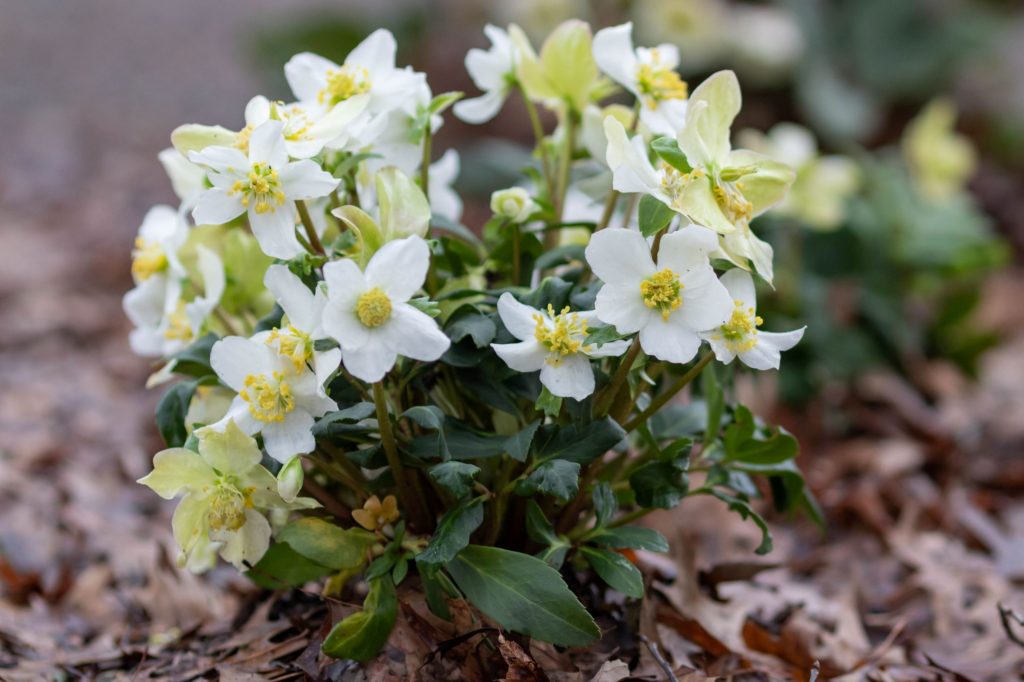
There are single-flowered cultivars and there are double-flowered cultivars. I personally like the single-flowered form over the double-flowered form. I like that the petals are rounder whereas with the doubles they come more to a point. The bees also seem to prefer single flowers over double flowers because they provide more nectar and pollen, and it’s easier for them to get the pollen.

Helleborus ‘Vavavoom Pink’ 
Helleborus ‘First Dance’
So, if you don’t have any hellebores in your garden, there’s no time like the present! You won’t regret it.
Looking for a checklist for gardening in January? Enter your name and email below to receive the January Gardening checklist and get subscribed to my periodic newsletter:
[yikes-mailchimp form=”1″]Camellias
The camellia is another STUNNER that you want to include. In my opinion, they’re better than roses, and they provide flowers when not much else is flowering. There is an amazing variety of camellias, and if your local garden center doesn’t carry them, there are some online retailers that carry a considerable variety of them (Wilson Bros Gardens, Lots of Plants, and Plants by Mail to name a few). If you’re looking for a certain variety, those online retailers are more likely to have them as stores only tend to carry a few varieties.

There are varieties with pale pink, bright pink, or deep pink flowers. There are variegated flowers. There are single, semi-double, formal double, and fully double flowers.
The two main varieties of camellia are Camellia sasanqua and Camellia japonica. Camellia sasanqua tends to be a little shorter (but still gets four to six feet tall) and more shrub-like. They tend to flower in the fall. Camellia japonica can get around eight to ten feel tall or taller. You can use them as a hedge or as a small statement tree. They tend to flower in the winter and spring. Camellia sinensis is the plant that is used to make tea and can be grown in the landscape as well.

Camilla Professor Sargent 
I love the prominent yellow stamen 
Beautiful variegated flowers
Camellias mostly prefer shade, which is great for those who are looking to add more color to their shady garden areas. Camellias are winter hardy from zones 8-10, while many are winter hardy in zone 7, and a few are being cultivated to be winter hardy in zone 6.
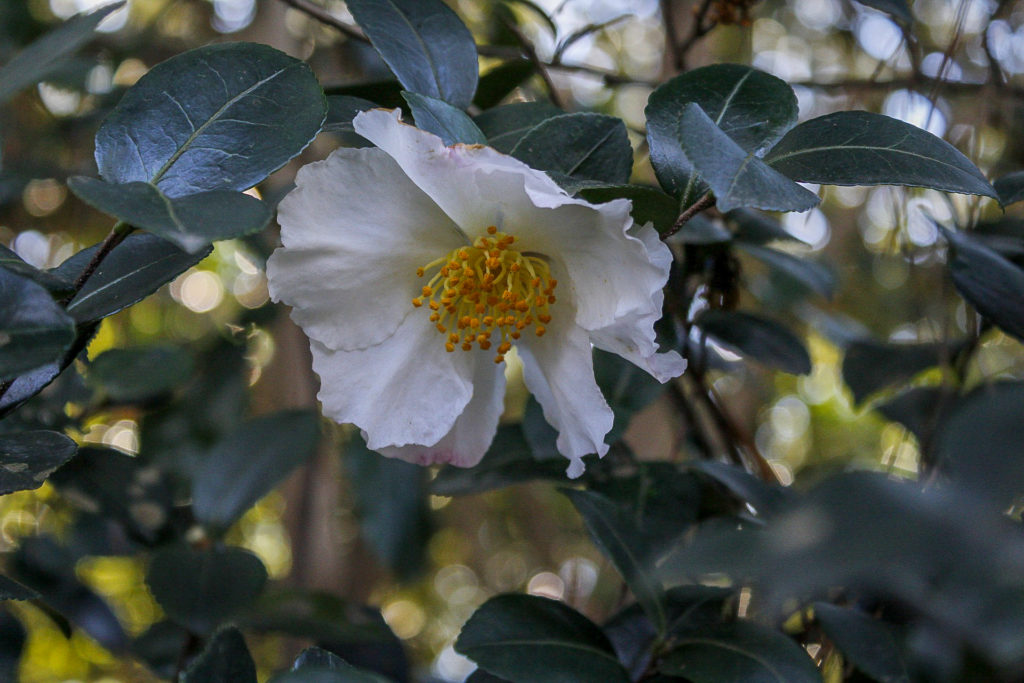
Camellias can be pruned to take many different forms. Keeping them closely pruned can form a hedge. They can be allowed to grow and may resemble a tree. They can also be pruned to form an espalier, like the example below which is trained to make a circle around a sign.

Camellias fulfill so many needs in the garden, they are definitely worth considering!
Early-flowering trees
Lastly, there are a couple trees that flower very early in the year. Witch Hazel and Wintersweet are two trees that flower very early, sometimes in January. Their flowers aren’t the most impressive thing you’ve ever seen, but when the tree is full of these blooms, it can make quite a statement. Especially since no other trees are flowering at this time.

Witch Hazel 
Fragrant Wintersweet
Well that’s all the flowers I have for January. Are there any I’m missing? Do you have anything blooming in your garden in January? I could love to hear from you in the comments!

